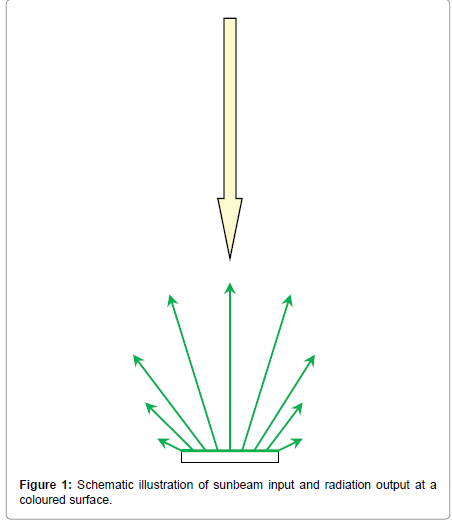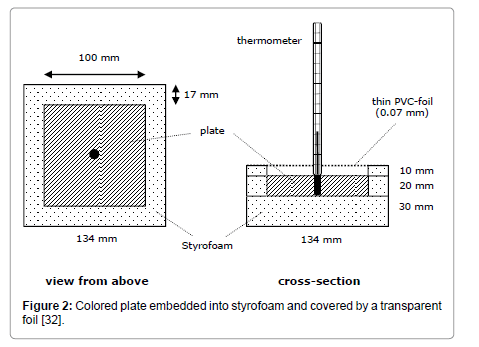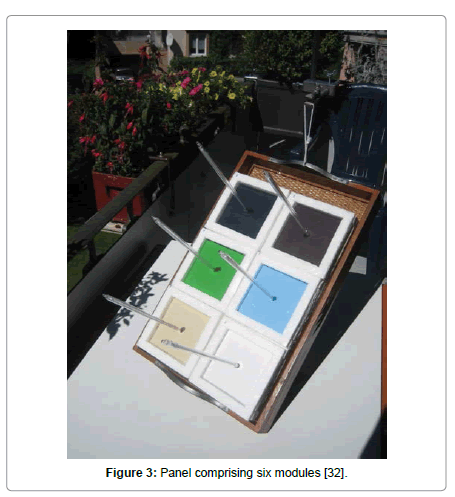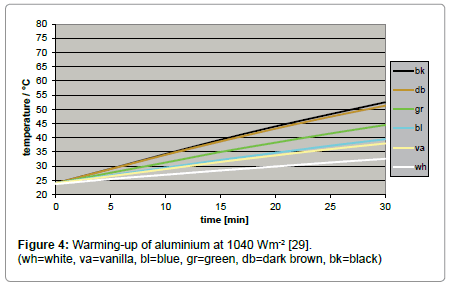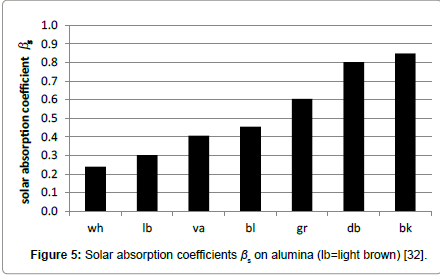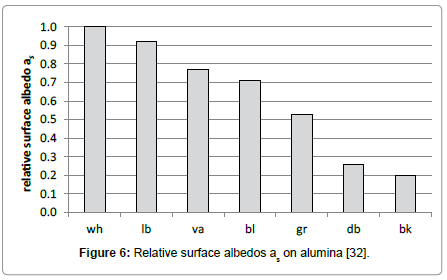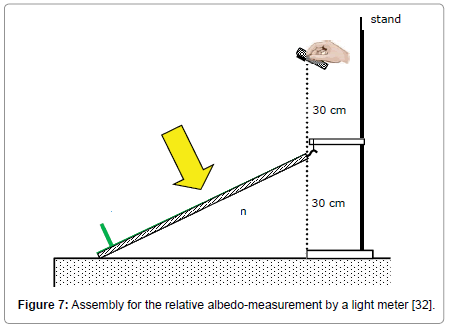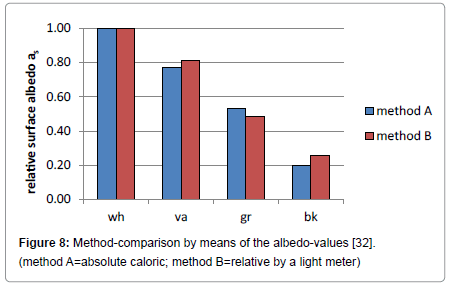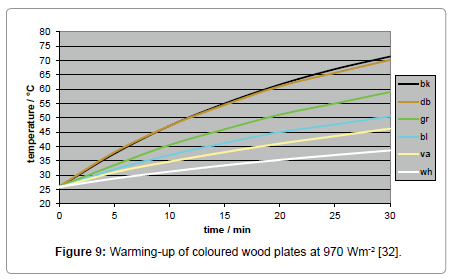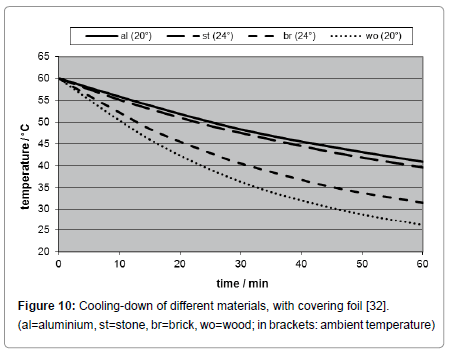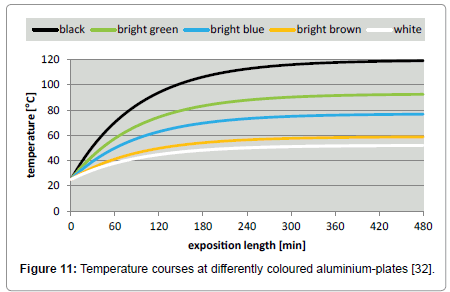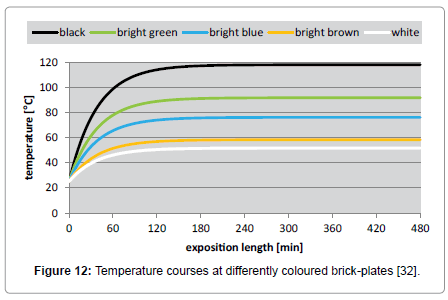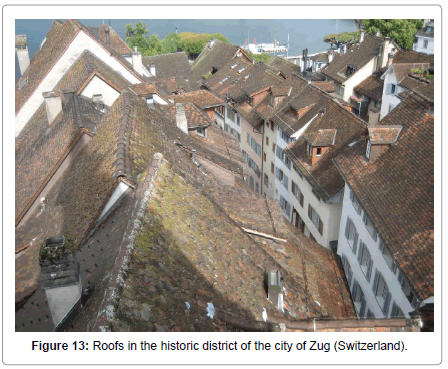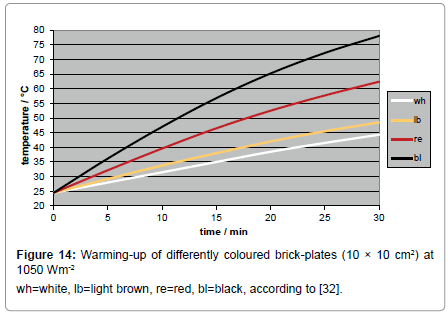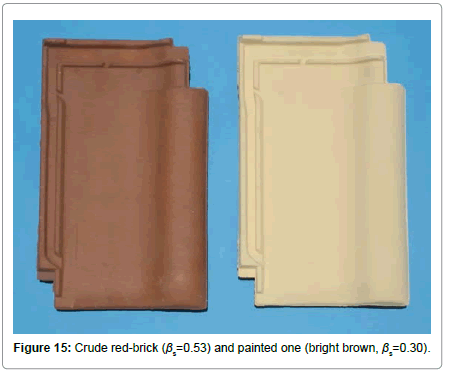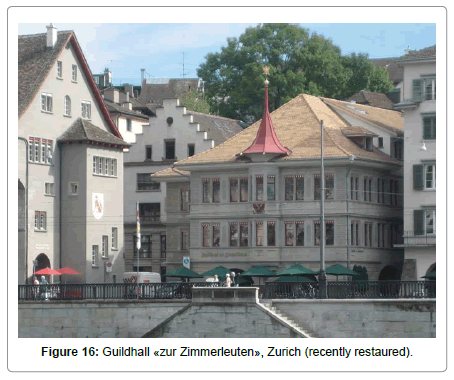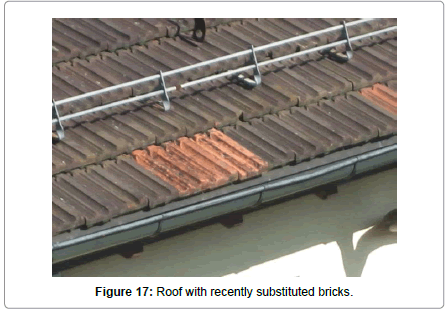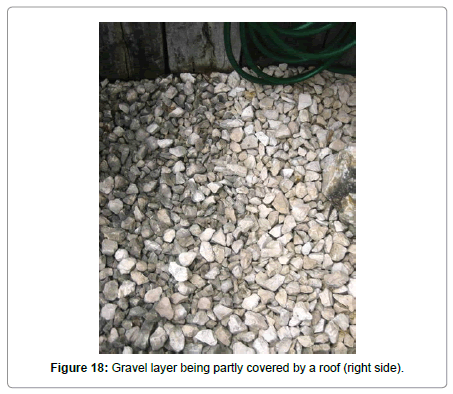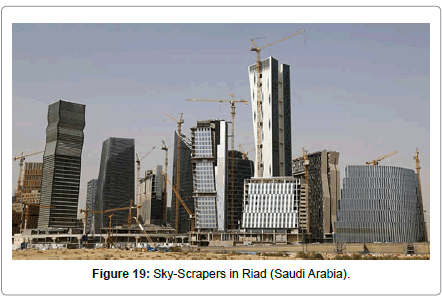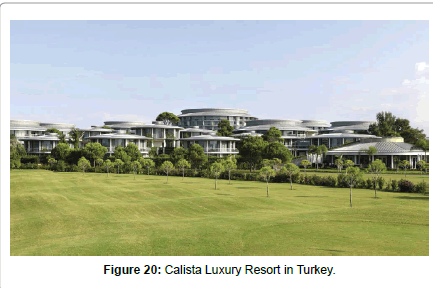Review Article Open Access
Measures at Buildings for Mitigating the Microclimate
Thomas Allmendinger*
Independent Scholar, Switzerland
- *Corresponding Author:
- Thomas Allmendinger
CH-8152 Glattbrugg/Zürich
Switzerland
Tel: +41 44 810 17 33
E mail: inventor@sunrise.ch
Received date: June 02, 2017; Accepted date: June 12, 2017; Published date: June 19, 2017
Citation: Allmendinger T (2017) Measures at Buildings for Mitigating the Microclimate. Environ Pollut Climate Change 1:128.
Copyright: © 2017 Allmendinger T. This is an open-access article distributed under the terms of the Creative Commons Attribution License, which permits unrestricted use, distribution, and reproduction in any medium, provided the original author and source are credited.
Visit for more related articles at Environment Pollution and Climate Change
Abstract
After the stringent refutation of the climate greenhouse theory, delivered by a recent publication, the artificial brightening of considerable parts of the Earth surface, preferably in cities, gives the only chance of mitigating the global warming and its implicit amplification of thermal surface gradients leading to intensified storms. It implies a novel climate philosophy, generally described under the motto «increasing the albedo», but proceeding from relatively small areas which influence the microclimate. Thereby, not the albedo itself should primarily be envisaged but rather its complement, the solar absorption coefficient of solid opaque materials, measurable by a previously described method and delivering the foundations for the here proposed measures. Thereby, primarily the influence of the colour and of the texture of surfaces is discussed. For roofs, bright brown is the preferred colour, whereas for facades white, or even brighter brown, is advisable. Furthermore, quality losses due to weathering are an important aspect, in particular for brick-tiles, suggesting appropriate preserving measures. Not least the properties of the construction materials have to be taken into account: The quicker the ground material is warmed up by solar irradiation, the quicker the near ground atmosphere warms up since the temperature difference between ground and atmosphere increases. Stones deliver the best suited natural construction material, due to their high heat capacity and low heat conductivity. Additional layers from artificial isolating materials should preferably be attached inside the house walls, and not outside. Glass facades and windows induce thermal traps. In view of future settlement constructions, the trapping of solar radiation within the complex geometry of urban canopy should be taken into account much more. Generally, the solar radiation absorbance of a building group is increased when its macro-roughness is increased. Thus high-rises as well as compacted urbanizing are not compatible with a consequent albedo-philosophy.
Keywords
Albedo; Solar absorption coefficient; Warming-up rate; Surface texture; Weathering; Construction materials; Building dimension
Introduction
In a previous paper [1], the common greenhouse theory has been crucially refuted while the anthropogenic impact of global climate change has not been principally denied. However, instead of the CO2 in the air, exhibiting a concentration of solely 0.04%, the reduced solar reflective behaviour – or reversely the enlarged albedo – of the Earth surface must be assumed as the governing factor for the climate change. Hence the global warming is mainly induced by a darkening of the Earth surface, not least of roofs, facades and pavements, leading to a larger absorption degree of sunlight and, as a consequence, to an enhanced warming-up of the near ground atmosphere layer. Besides, a direct warming-up to the atmosphere by incident solar radiation takes place, but it is independent of the carbon-dioxide content of the air or of other trace gases [2]. The heat transfer from Earth surface to air is induced by convection, heat conduction, and thermal radiation. However, the latter one affects just mere air, independent on its carbon-dioxide content [1]. This process of fortified warming-up via darkened Earth surface has taken place at a progressive rate during the recent period of civilization. But it was dispersed not homogeneously over the Earth surface but erratically, leading to greater temperature gradients and thus to more storms. As a consequence, brightening-up of large areas will be the only practical means to mitigate the climate, first in small scales, and later in the global scale. But even if that effect is known long, almost nothing has been made so far, while the greenhouse theory served as an excuse, hindering any constructive measures by suggesting a mistaken diagnosis.
In particular, the phenomenon of the so called urban heat islands is well known. Howard [3] was the first to provide evidence in 1833 that air temperatures are often higher in the city of London than in its surrounding countryside. But only after the Second World War, this issue was taken up [4], while a series of investigations followed, sampling the temperature distributions of many cities and considering different influences such as surface geometry, wind convection and water transfer. In order to be able to explain more precisely the surface boundary effects due to solar radiation particularly in cities, several mathematic models have been proposed in recent times, e.g. by Mills [5], Grimmond and Oke [6], Masson [7], Kusaka et al. [8] and Erell and Williamson [9]. A review about the application of urban climate research on the design of cities is given by Erell [10]. Besides these general aspects, the special situations in several cities have been described, e.g. in Hong Kong (China) [11], Malmö (Sweden) [12], Reykjavík (Iceland) [13], Singapore [14,15], Trento (Italy) [16], Utrecht (Netherlands) [17] and St. Louis (USA) [18,19]. But in view of the several possible influences, such as a lower evaporative cooling from urban land or the heat convection [20], it is difficult to distinctly associate the temperature enhancement in cities to a single influence such as the one of the albedo.
Since the trapping of solar radiation within the complex geometry of urban canopy is a contributing factor of the urban heat island, several urban energy balance models and observations have been presented in the literature, considering the albedo as a weighty factor. However, any built-up area represents a composition of separate areas, being aligned in different angles, and entailing an average albedo-value which depends on the Zenith angle [21]. Moreover, in such models [21-23] the diurnal warming-up, the intermediate heat storage, and the subsequent cooling-down of the different areas are not taken into account. Hence they are of no practical use.
Nevertheless, there is no doubt that the building dimensions as well as the ambient ground considerably influence radiation characteristics as well as the – hardly calculable – atmospheric energy budget of urban areas. Thereby, considerable radiative interactions between the ground and the facades are to be expected while flat roofs are independent of the other parts. By contrast, gable roofs may partly influence each other, due to the reflected light. In a general sense it may be stated that the solar radiation absorbance of a building group is increased when its macro-roughness is increased. It mainly depends on the proportion between altitude and latitude of the involved buildings. Thus low houses inherently engender an inferior macro-roughness than high houses and the contribution of their roofs to the absorption of solar radiation is lager, so a respective colour brightening is more effective. However, such aspects concern entire settlement and building concepts being beyond the scope of this treatise, even if they are worth to be mentioned.
Besides these investigations, several proclamations were made over the last twenty years, establishing the term «cool roofs», for instance the recent one of Hannah Hoag [24]. Several criteria for favourable materials were recommended [25-28]. Moreover, individual benefits due to the reduction of air-condition costs were theoretically calculated [29,30]. However, no project is known so far where a distinct region being large enough for possibly influencing the microclimate, preferably an entire little town, has been artificially brightened up, while the atmosphere temperature effect – or more generally the climatic effect – would have been traced by measurements. Not even a single house has been modified in this way, yet, and even less a small group of houses. People do not see an individual benefit from such measures since roof- and wall-isolations, as well as electrical high-tech air-conditioning, almost seem to guarantee a sufficient indoor climate, while the outdoor climate is rather indifferent for them. Besides, the albedo has so far not been considered as a relevant feature in the parametrization of landscapes being part of databases delivered by satellites. So, detailed analyses of the solar reflective behaviour of distinct regions are not feasible since no data are available.
But even if the necessity of recording such data would be realized, there would arise a considerable obstacle which has been overlooked so far, and which affects any respective calculation: namely the fact that actually not the part of reflected solar radiation is relevant, expressed by the term «albedo» and usually designed with α, but rather the part of absorbed solar radiation leading to a warming-up of the surface material. From the beginning, α-values were determined by field-measurements comparing the intensities of the reflected radiation with the one of the incident radiation, as it is described in in the ASTM prescription E198– 06. However, other methods have been applied, too, e.g. one by the use of helicopters [31]. Thereby, the absorption coefficient β is assumed as the complement to the reflection coefficient α, thus β=1–α. But in fact, this relation cannot be accepted as irrefutable since this kind of reflection is not only connected to a colour-chance of the light, due to the colour of the surface material, but also to a dispersion of the reflected light into all directions, as scheduled in Figure 1. Consequently, it is not easy to measure the intensity of the totally reflected light which is spread in all direction, but which should be known for determining the solar absorption coefficient. Thus the above cited method cannot guarantee a correct determination. Alternatively, within the author’s recently published approach [32] a lab-like method for directly determining the solar absorption coefficient has been developed. Since it delivers the foundations of the here made considerations and the proposed measures, it will initially be described in detail.
The direct determination of the solar absorption coefficient
Within this method [32], the temperature rise of coloured plates was measured in the presence of vertically incidental solar light. The quadratic plates were 10 × 10 cm2 large and normally 20 mm thick. To avoid heat losses laterally and at the bottom, the plates were embedded in Styrofoam, and covered with a thin transparent foil acting as an outer window to minimize erratic cooling by atmospheric turbulence (Figure 2). The preferred reference material was aluminium. It guarantees a high measurement precision, due to its high specific heat capacity, reducing the thermal interference with the mounting material, and furthermore due to its high thermal conductivity facilitating the heat dispersion in the plate and thus minimising the temperature difference between surface and bulk. For comparison, additionally other materials were used (wood, brick, and stone). For the warming-up experiments, several coloured plates were orientated exactly vertically to the incoming sunlight, being covered before activation by aluminium-foils. For enabling a correct orientation, the plate modules were positioned on an adjustable carrier (Figure 3). The temperatures were measured at regular intervals of 5 min using Hg-thermometers which were centrally inserted in respective holes. The heating-rate could easily be determined by graphically assessing the initial slope. It turned out to depend not only on the surface colour of the plate but also on its heat capacity (or its thermal admittance). Of course, the sky had to be cloudless during the experiment. For measuring the intensity of the solar insolation, an electronic »solarmeter« was used.
The time/temperature-plots for different coloured plates are shown in Figure 4. Thereof-and considering the heat capacities of the plates, the specific solar absorption coefficient βs could be calculated, delivering the results displayed in Figure 5. Furthermore, assuming complementarity to 1, the solar reflection coefficients αs=1–βs could be easily derived. However, it was proposed to distinguish between the solar reflection coefficient and the albedo, the latter one being related to a white surface, according to the original meaning of the word. Thus the albedo represents a relative value, being related to a white surface and being 1 for any white surface. As a consequence, and according to this proposition being not identical with the hitherto usual one, the albedo and the solar reflecting coefficient are not equal, the latter one being smaller than the former one (Figure 6).
The introduction of this separate term allows the application of an easier method B to determine the albedo, using a white surface as a reference and a simple light meter being usual for photography, enabling field measurements (Figure 7). As Figure 8 reveals, the results which were obtained by method B were sufficiently accurate. Thus, when the solar reflection coefficient of the reference is known – being determined via the direct method A – the solar reflection coefficient, and consequently the solar absorption coefficient, can be calculated.
As it can be anticipated, such plates being exposed to direct sunlight will not be warmed up ad infinitum, but only up to a limiting temperature. Thus the time/temperature-curves will, sooner or later, flatten losing their initially linear character. This phenomenon is already hinted when, instead of aluminium, plates from wood are inserted which exhibit a lower heat capacity implying a quicker warming-up (Figure 9). Obviously, this can be explained with the emission of thermal radiation which effects cooling-down, being temperature dependent, and growing till its intensity is equal to the intensity of the absorbed incident solar radiation.
This cooling-down-effect was studied separately in a darkened room, using the same embedding as the one which had been used for the warming-up measurements, but starting from an elevated temperature being achieved by preheating the plate in an oven. As expected, the cooling-down rates depended on the heat capacity of the material (Figure 10). But unexpectedly, they did not depend on the surface colour. Moreover, besides thermal radiation, additional heat transfer was involved, too. As the analysis yielded, the curvecourse was exponential, being exactly describable with a mathematical formula. Moreover, the heat transfer coefficient B could be determined from experimental data, turning out to be in the first approximation independent of the material but dependent on the surrounding atmosphere. Hence, a general heat transfer coefficient of approx. 9 Wm-2 K-1 may be assumed. In the case of the absence of a foil, the heat transfer coefficient increased by the factor 1.7 up to 15 Wm-2 K-1. However, as it seems obvious, the heat conductivity of the material is decisive, too, but scarcely calculable. (Remarks to the limitation of this determination method are made in [1]).
The combination of the respective formula yielded that the limiting temperature is independent of the heat capacity (or the thermal admittance), but solely dependent on the irradiation density Ф, the solar absorption coefficient βs, and the heat transfer coefficient B. For instance, in the case of the black aluminium plate which exhibits a solar absorption coefficient of 0.85 and a heat transfer coefficient of 8.8 Wm- 2K-1 (in the presence of a cover-foil), at a solar irradiation density of 1000 Wm-2 the maximal temperature enhancement is approx. 95°(K or C), whilst in the case of the white aluminium plate which exhibits a solar absorption coefficient of 0.24, the maximal temperature enhancement is approx. 27°(K or °C). If the ambient temperature Tam is assumed to be 25°C, the resulting limiting temperatures are 120° (for the black plate) and 52° (for the white plate), respectively. The ratio of the two temperature enhancements is approx. 3.5, being equal to the ratio of the two solar absorption coefficients. Hence it expresses the increase of the absorption of solar light due to the black colouring relative to a white colouring. Or generally, the ratio between the solar absorption coefficient of a particular colour and the absorption coefficient of white colour delivers a quantitative measure for the debasement of the solar reflective behaviour of that colour. The respective specific coefficient bs was designated as the solar colour factor.
Finally, the temperature courses at differently coloured aluminiumplates (Figure 11), as well as at brick – plates (Figure 12), were calculated (with foil). These plots reveal that the heating-rates of the aluminiumplates are much smaller than those of the brick-plates – namely due to the larger heat capacity (i.e., the thermal admittance) –, while the limiting temperatures are equal in both cases.
Obviously, these data and relations are solely valid for ideal conditions, in particular for solid opaque plates at a constant vertical solar irradiation, with a clear sky and in still air. In reality, the solar irradiation is not constant, depending on the solar altitude, i.e. on the geographic latitude and on the diurnal variation, as well on the seasonal variation. Contrary to the common assumption, not even the extra-terrestrial «solar constant» is constant since the Earth orbit is not circular but elliptical letting suppose an annual intensity variation of 7%, due to the variable distance between Earth and Sun. Furthermore, the sea level plays a considerable role, apart from the irregular emerging of clouds and dusts. Not least the fact should have to be regarded that the atmosphere is ever in internal motion, vertically as well as horizontally, which implies energetic and thermodynamic changes.
Nevertheless, the relations and results of this method deliver some principal hints which should be taken into account with respect to constructional measures at buildings and urban areas for improving the micro-climate. Since exact forecasts are not possible, such measures should preferably be monitored by suitable measurements to gather experience, allowing further improvements.
The Influence of the Colour and of the Surface Texture
As already pointed out, the colour has a predominant influence on the solar reflective behaviour of surfaces, even if other effects such as surface roughness and mirroring may act an additional part. Remarkably, the solar absorption coefficient for (light) green is quite large, namely 0.6. Thus, from this point of view, green colour should not be chosen for improving the albedo. However, the effect of planted green spaces cannot be completely gathered by this method since the water vaporization by the plants leads to a temperature decrease. Moreover, considerable differences exist between lawns, meadows, areas planted with herbaceous perennials, and woodlands. Nevertheless, the statement made by Hoag [24] seems remarkable that observations of «green roofs» which have been installed in several locations raised questions about their climatic benefits.
Virtually, for obtaining an optimum reflection effect for solar light each colouring at buildings and pavements should actually be white. However, some further criteria must be considered: For instance, white pavements appear to be unfavourable because of their blinding effect, in particular for motorists. But above all, aesthetic aspects should be regarded. The word «climate» is deduced from the Latin word «clima» which means «region». Hence, strictly speaking, a «world climate» does not exist. For clarifying this, the term «microclimate» has to be introduced. Moreover, the term «climate» also implies an emotional - and not least visual - component which is hard to describe, but which may be expressed by terms such as «picturesque» or «quaint» villages being not monotonous but diverse with respect to forms and colours. Such criteria were much more respected in architecture during past epochs than nowadays where square angles and unnatural colours are dominant, often arranged out of phase. Constrained originality alternates quite often with artless flatness quite often.
But the prospective attempt of brightening the Earth surface may likewise be the reason to beautify the buildings, and in particular the roofs, since the colours which are suited for improving the albedo – or inversely for reducing the solar absorption coefficient–are also suited to embellish the houses. There is no doubt that this will also bring an individual benefit to the homeowners, and it will solely be a matter of habit to appreciate such embellishments, while presently ugly roofs such as those shown in Figure 13 are considered as being usual, in the opinion that it is right and proper.
Considering Figure 14, a colouring exists which fulfils the albedo criterion as well as the aesthetic criterion, and which is suited particularly for roofs. Indeed, bright brown, being similar to the colourings of desert sand, exhibits an albedo near to 1 (in this case of 0.92, corresponding to a solar absorption coefficient βs of 0.30) while it is in a proper contrast to the bright blue of the sky. It yields even a considerable improvement compared to brick-red exhibiting an albedo of 0.92 and a βs of 0.53 (Figure 15), all the more compared to dark-brown bricks exhibiting albedos of approx. 0.25 (βs=0.8), while it matches well to the white or brighter colour which may preferably be chosen for facades. Similarly coloured bricks were applied at ancient buildings, as the photo of an originally restored house with a plain tile roof cladding shows (Figure 16). Certainly, the applied colour may vary within a specified tinge leaving a margin for the architect. Moreover, spots of other colours–for instance light blue window shutters - shall be admitted, encouraging creating artful and beautiful works.
It hardly needs mentioning that photovoltaic roofs contribute to a warming-up of the microclimate, due to their nearly black colouring. So they are not at all climate conditioners but rather climate killers, apart from the fact that they spoil the landscape, having not an earthily chance to substitute the energy production to a considerable part.
Long-Term Changes due to Weathering
Quality losses due to weathering are an important aspect, in particular for brick-tiles. As obvious from Figure 17, it may lead to a considerable darkening which is probably due to the diffusion of heavy metal oxides – especially of iron-oxides – from the microporous bulk to the surface. It is presumably accelerated by acidified rain being a result of a high CO2-emission in the surroundings. Thus CO2 has an indirect effect on the climate, but not a direct one. It may simply be reduced by painting the bricks.
Further evidence for the role of acidified rain and carbon-dioxide is given in Figure 18 where a stone patch is shown which was partly overlapped by a roof. Obviously, the overlapped area (right side) is brighter than the one which was exposed to the rain. However, it is conceivable that at least part of the darkening is due to the precipitation of soot and of dust. (Both photos were taken at a house which is located in the vicinity of an airport, of highways and of much urban traffic). Similar weathering effects occur at detached walls which may be cleaned using high pressure methods. Furthermore, suitable impregnations come into consideration.
The Influence of the Construction Material
As already pointed out, the limiting temperature of a solid opaque body being exposed to sunlight solely depends on its surface colouring and on the heat receptivity of the adjacent atmosphere layer – be it by heat conduction, by thermal radiation or by air convection –, but not by the nature of the involved solid opaque body, in particular not by its heat capacity and by its heat conductivity.
However, this statement is only true for stationary equilibria that are reached after a certain time during which the intensity of the solar irradiation must be constant. Then the intensity of the absorbed solar radiation, which depends on the surface colouring, is equal to the emitted energy power, which does not depend on the surface colouring. But in reality, this is seldom the case since the solar radiation continuously changes its intensity due to the continuous variation of the solar altitude. Moreover, the absorbed heat must be spread within the entire involved material which depends on its heat capacity as well as on its heat conductivity. Therefore, the absorbed heat is temporarily stored within this material, being emitted retardedly, in particular at night. This aspect is consistently disregarded in the convenient atmospheric theory. It lets appear any modelling as very difficult, if not impossible, in particular when thick surface layers are involved. Nevertheless, the data and relations given in [32] allow some principal statements about the influence of the construction materials.
First of all, it has to be realized that the near ground atmosphere warms up all the more the quicker the ground material is warmed up by the solar irradiation since then, the increase of the temperature difference between ground and atmosphere is greater. Thus the surface material acts like a heat transforming catalyst. As a consequence, thin materials with a low specific heat capacity and a low heat conductance generate a greater warming-up than thick materials with a high specific capacity and a high heat conductance (Table 1).
| Materials | Volume-Specific Heat Capacity [Jcm-3K-1] | Specific Heat Conductivity [Wm-1K-1] |
|---|---|---|
| Aluminium | 2.4 | 236 |
| Natural Stone (Granite) | 2.1 | 3.5 |
| Roofing Tile (Brick) | 1.5 | 1.0 |
| Fir-Wood | 0.9 | 0.15 |
Table 1: In the below table the approximate respective values are given for some typical construction materials.
This means that well insulating materials with a low volume-specific heat capacity, particularly wood, are inferior anterolateral materials with respect to the mitigating of microclimate. But this is not the only criterion which has to be taken into account: of course, the isolation ability is of considerable importance which may be an argument for using wood. However, the two aspects internal thermal insulation and external warmingup capability must be weighed up. Obviously, metals such as aluminium are not suited for building materials in spite of their high specific heat capacity since their heat conductivity is too high. Stones deliver the best suited natural construction material, due to their high heat capacity and relatively low heat conductivity. Roofing tiles from brick insolate much better, but they are normally quite thinner. Moreover, their volume-specific heat capacity is lower. Besides, they are much more exposed to the sunlight. For improving their isolation capability, more and more inner isolation layers from artificial materials are attached. However, the latter do not improve the external cooling efficiency, on the contrary! Even worse appears the mounting of anterolateral insolation layers on house walls, combined with thin plates from synthetic materials or from aluminium, which leads to a fortified external warming-up and a reduction of the heat capacity. Perhaps, in view of this knowledge architects will find better solutions in future. Besides, it also should be realized that window shutters are, due to their thin textures, more advantageous for the indoor climate but less for the outdoor climate. Generally one should be aware that any internal coolingdown leads to an external warming-up. That is also true for electrically fed air-conditioning. The best means of coordinating both requirements is brightening-up the outer surfaces.
With respect to the microclimate, windows represent weak spots since they ever generate thermal traps. They should preferably be provided at the dark sides of the houses. On the sunny side, i.e., on the south side at the northern hemisphere, they should be equipped with bright shutters, while their area should be minimized. Glass facades, in particular black ones, are extremely unfavourable. Regarding the imminent «albeo-philosophy», they should be completely relinquished in future. Moreover, high-rises as well as compacted urbanizing are not compatible with this philosophy, and it seems self-evident that examples, such as the one given in Figure 19, do not promise an enjoyable climate future. Certainly, they cannot readily be eliminated, but at the most brightened-up. Nevertheless, the future strategy could at least be reoriented, even if the here quoted bad example comes from the orient.
Summary and Conclusion
After the stringent refutation of the climate greenhouse theory, recently delivered in [1], the artificial brightening of considerable parts of the Earth surface, preferably in cities, gives the only chance of mitigating the global warming and the amplification of thermal surface gradients leading to intensified storms. It implies a novel climate philosophy, generally described under the motto «increasing the albedo» and it may be represented by a white house in Tunisia shown in Figure 20, being apparently an early symbol of such an intent. Thereby, aesthetic aspects should also be taken into account, intending to create a handsome new face of the World, and considering the fact that the term «climate» also implies an emotional – and not least visual – component which is hard to describe, but which may be expressed by terms such as «picturesque» or «quaint» villages being not monotonous but diverse with respect to forms and colours. Certainly, applications on a very large scale will be necessary for inducing a significant global effect. Nevertheless, significant effects on microclimates appear to be likely when such measures are taken to a considerable extent, delivering experience for further improvements, and yielding the headstones for a stepwise global project.
Thereby, not the albedo itself should primarily be envisaged but rather its complement, the solar absorption behaviour of solid opaque materials, measurable by a previously described method [32] and delivering the foundations for the here proposed measures. Thereby, primarily the influence of the colour and of the texture of surfaces is relevant. For roofs, bright brown is the preferred colour, whereas for facades white, or even brighter brown, is advisable. On the other hand, «green roofs» are not effective but expensive, while black photovoltaic roofs turn out to be climate killers, apart from the fact that they spoil the landscape. Furthermore, quality losses due to weathering are an important aspect, in particular for brick-tiles, suggesting appropriate preserving measures, preferably painting or chemically impregnating. Not least the properties of the construction materials have to be taken into account: The quicker the ground material is warmed up by solar irradiation, the quicker the near ground atmosphere is warmed up since the temperature difference between ground and atmosphere increases. Stones deliver the best suited natural construction material, due to their high heat capacity and low heat conductivity. Wood is less suitable. Additional layers from artificial isolating materials should preferably be attached inside the house walls, and not outside. Glass facades and windows induce thermal traps. In view of future settlement constructions, the trapping of solar radiation within the complex geometry of urban canopy should be taken into account much more. Generally, the solar radiation absorbance of a building group is increased when its macro-roughness is increased
The weathering of building materials, particularly of brick-tiles, is probably accelerated by acidified rain being a result of a high CO2- emission in the surroundings. Thus CO2 has an indirect effect on the climate, but not a direct one. However, this phenomenon should be a warning signal to the fact that CO2 being emitted in large quantities, combined with soot, fine dust and other waste gases such as nitrous gases, as a result of fossil fuel combustion, still represents a considerable part of environment pollution implying hardly assessable consequences such as acidification of the oceans, presumably leading to a damage of the marine plankton. Hence, the statement that no climatic greenhouse effect exists does not deliver a blank cheque to an unlimited consumption of fossil fuels, apart from the fact that their reserves are not unlimited.
Acknowledgement
The present work has been carried out independently but not without the critical support of Dr. Andreas Rüetschi and of Dr. Philipp Hasler and the translation assistance of Verena Ginobbi.
References
- Allmendinger T (2017) The refutation of the climate greenhouse theory and a proposal for a hopeful alternative. Environ Pollut Climate Change 1: 2.
- Allmendinger T (2017) A novel investigation about the thermal behaviour of gases under the influence of IR-radiation: A further argument against the greenhouse thesis. J Earth Sci Clim Change 8: 3
- Howard L (1833) The climate of London, Vols. I-III, London.
- Mitchell Jr JM (1961) The temperature of cities, Weatherwise, pp: 224-258.
- Mills G (1997) The radiative effects of building groups on single structures. Energy Build 25: 51-61.
- Grimmond CSB, Oke TR (1999) Turbulent heat fluxes in urban areas: Observations and evaluation of a simple model. J Appl Meteor 41: 792-810.
- Masson V (2000) A physically-based scheme for the urban energy budget in atmosphere models. Boundary-Layer Meteorol 94: 357-397.
- Kusaka H, Kondo H, Kikegawa Y, Kimura F (2001) A simple single-layer urban canopy model for atmospheric models: Comparison with multi-lay and slab models. Boundary-Layer Meteorology 101: 329-358.
- Erell E, Williamson T (2006) Simulating air temperature in an urban street canyon in all weather conditions using measured data at a reference meteorological station. Int J Climatol 26: 1671-1694.
- Erell E (2008) The application of urban climate research in the design of cities. ABER 2: 95-121.
- Ghiridharan R, Ganesan S, Lau SSY (2004) Daytime urban heat island effect in high-rise and high-density residential developments in Hong Kong. Energy Build 36: 525-534.
- Bärring L, Mattisson JO, Lindqvist S (1985) Canyon geometry, street temperatures and urban heat island in Malmö, Sweden. J Climatol 5: 433-444.
- Steinecke K (1999) Urban climatological studies in the Reykjavík subarctic environment, Iceland. Atmos Environ 33: 4157-4162.
- Chuan Goh K, Hung Chang C (1999) The relationship between height to width ratios and the heat island intensity at 22:00 h for Singapore. Int J Climatol 19: 1011-1023.
- Chow WTL, Roth M (2006) Temporal dynamics of the urban heat island of Singapore. Int J Climatol 26: 2243-2260.
- Giovannini L, Zardi D (2013) Characterization of the thermal structure inside an urban canyon: Field measurements and validation of a simple model. J Appl Meteor Climat 52: 64-81.
- Brandsma T, Wolters D (2016) Measurement and statistical modelling of the urban heat island of the city of Utrecht. J Appl Meteor Climat 51: 1046-1060.
- White JM, Eaton FD, Auer H (1978) The net radiation budget of the St. Louis metropolitan area. J Appl Meteorol 17: 593-599
- Dabberdt WF, Davis PA (1978) Determination of energetic characteristics of urban-rural surfaces in the Greater St. Louis Area. Boundary-Layer Meteorol 14: 105-121.
- Zao L, Lee X, Smith RB, Oleson K (2014) Strong contributions of local background climate to urban heat islands. Nature 511: 216-219
- Craig CD, Lowry WP (1972) Reflections on the Urban Albedo, in “Conference on Urban Environment and Second Conference on Biometeorology”, Philadelphia PA, American Meteorological Society, pp: 159-164.
- Aida M (1982) Urban Albedo as a function of the urban structure – A model experiment (Part I). Boundary Layer Meteorology 23: 405-413.
- Aida M, Gotoh K (1982) Urban Albedo as a function of the urban structure – A two-dimensional numerical simulation (Part II). Boundary Layer Meteorology 23: 415-424.
- Hoag H (2015) How cities can beat the heat. Nature 524: 402-404.
- Pomerantz M, Akbari H (1998) Cooler paving materials for heat-island mitigation. Proceedings of the 1998 ACEEE summer study on energy efficiency in buildings 9: 135-146.
- Doulos L, Santamouris M, Livada I (2004) Passive cooling of outdoor urban spaces. The role of materials. Solar Energy 77: 231-249.
- Synnefa A, Santamouris M, Livada I (2006) A study of the thermal performance of reflective coatings for the urban environment. Solar Energy 80: 968-981.
- Synnefa A, Santamouris M, Apostolakis K (2007) On the development, optical properties and thermal performance of cool colored coatings for the urban environment. Solar Energy 81: 488-497.
- Pomerantz M, Akbari H, Berdahl P, Konopacki SJ, Taha A, et al. (1999) Reflective surfaces for cooler buildings and cities. Philosoph Mag 79: 1457-1476.
- Levinson R, Akbari H, Konopacki S, Bretz S (2005) Inclusion of cool roofs in non-residential title 24 prescriptive requirements. Energy Pol 33: 151-170.
- Bray JR, Sanger JE, Archer AL (1966) The visible albedo of surfaces in central Minnesota. Ecology 47: 524-531.
- Allmendinger T (2016) The solar-reflective characterization of solid opaque materials. Int J Sci Technol Educ Res 7: 1-17.
Relevant Topics
Recommended Journals
Article Tools
Article Usage
- Total views: 3842
- [From(publication date):
July-2017 - Apr 03, 2025] - Breakdown by view type
- HTML page views : 2957
- PDF downloads : 885

